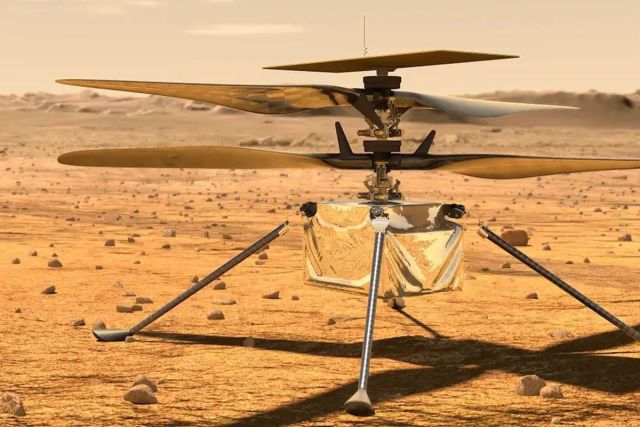Washington. September 5. INTERFAX-The helicopter-drone Ingenuity ("Ingenuity"), which arrived on Mars together with the Perseverance rover ("Perseverance"), made the 13th successful autonomous flight on the Red Planet, the NASA Jet Propulsion Laboratory reported.
"Ingenuity has made its 13th successful flight on Mars. He flew at a speed of 3.3 meters per second, taking pictures of the south-eastern part of the South Seita region. The aerial survey continues to help plan (the rover's route) Perseverance, " the report says.
The flight began on Saturday at 17: 08 US West Coast time (on Sunday at 03: 08 Moscow time).
In the area of Southern Seita in the Jezero crater in mid-August, the previous research flight of a Martian helicopter was also conducted. The aim was to obtain photographs of the area of interest from a geological point of view.
This time, the drone helicopter flew at a lower altitude - 8 meters compared to 10 meters during the 12th mission. The images were taken in a different direction than before, to plan the route of the rover.
The flight range was 210 meters compared to 450 meters during the 12th flight. The speed was also reduced from 4.3 to 3.3 meters per second compared to the previous mission. The duration was 161 seconds. 10 photos of the area were taken, which were transmitted to the rover, and then relayed to Earth.
During the entire stay on the Red Planet, the helicopter, having already made 13 flights, flew a total of 2.88 km, being generally above the surface of Mars for almost 25 minutes. The longest flight was the 9th, when he flew 625 meters. During the first flight on Mars on April 19, the helicopter rose to a height of only three meters and spent 39 seconds above the surface of Mars.
The Ingenuity device is 1.2 meters in diameter and weighs 1.8 kg, it is equipped with two cameras, it is able to hover in the air for 20-30 seconds to photograph the area.
The Perseverance rover with the Ingenuity helicopter made a successful landing on the surface of the Red Planet on February 18.
The American automatic interplanetary station to Mars was launched on July 30 last year.

